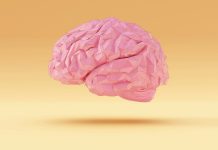
A new study published in the Journal of Neuroscience has found a potential new therapeutic strategy to treat Alzheimer’s disease.
Researchers found in a model of the illness in mice, astrocyte cells in the brain release proteins that favor survival of neurons.
The finding could help with the understanding of the physiology of astrocytes, and represent possible future therapies for Alzheimer’s.
The research was done by a team from the Institute of Neurosciences of the University of Barcelona (UBNeuro).
Alzheimer’s disease is the most common form of dementia.
Previously, scientists have found that this disease could cause damage in memory and in other cognitive skills.
The condition sometimes is combined with mood swings and personality changes.
Currently, one of the most promising therapies against Alzheimer’s is using neurotrophic factors. This is a family of proteins favoring neuron survival.
However, the treatment cannot be specifically targeted to the affected tissue or controlled to release the proper dosage. High doses could be neurotoxic and bring harms.
In this study, the researchers examined the brain-derived neurotrophic factor (BDNF) generated by a type of star-shaped glial cell in the brain and the spinal cord.
The glial cells are affected by one of the neuroinflammation processes of Alzheimer’s.
The team designed an experiment with genetically induced Alzheimer’s mice that produce BDNF protein depending on the protein levels.
They found this method restores the production and release of the neurotrophin in the sick neuronal tissue when the pathology starts.
In addition, the BDNF generated by the glial cells could regulate neuron formation and has cognitive effects in mice.
The researchers suggest that the use of this therapy in humans is still far in the future, but it provides a promising therapeutic strategy for Alzheimer’s disease.
The research also makes it possible to apply neuroinflammation processes to other neurodegenerative diseases.
One study author is Albert Giralt, member of the Consolidated Research Group on Physiopathology of Neurodegenerative Diseases of the UB.
Copyright © 2019 Knowridge Science Report. All rights reserved.
Further reading: Journal of Neuroscience.



